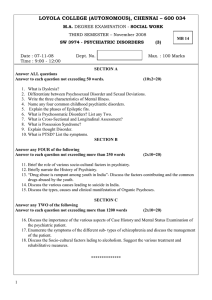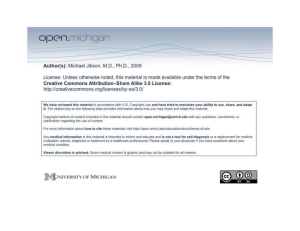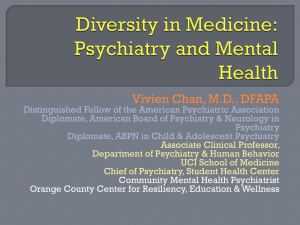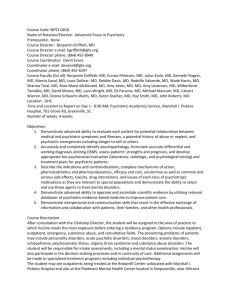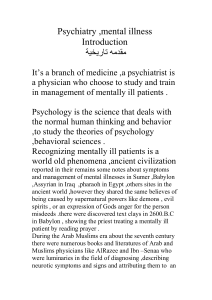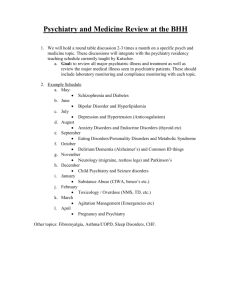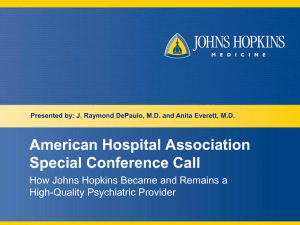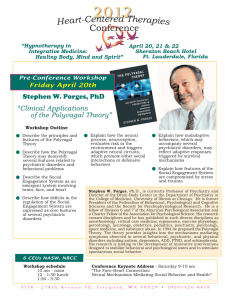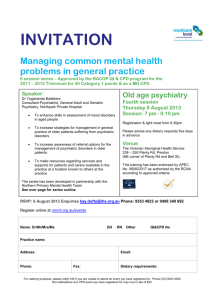Learning object Author This learning object will help you in the
advertisement
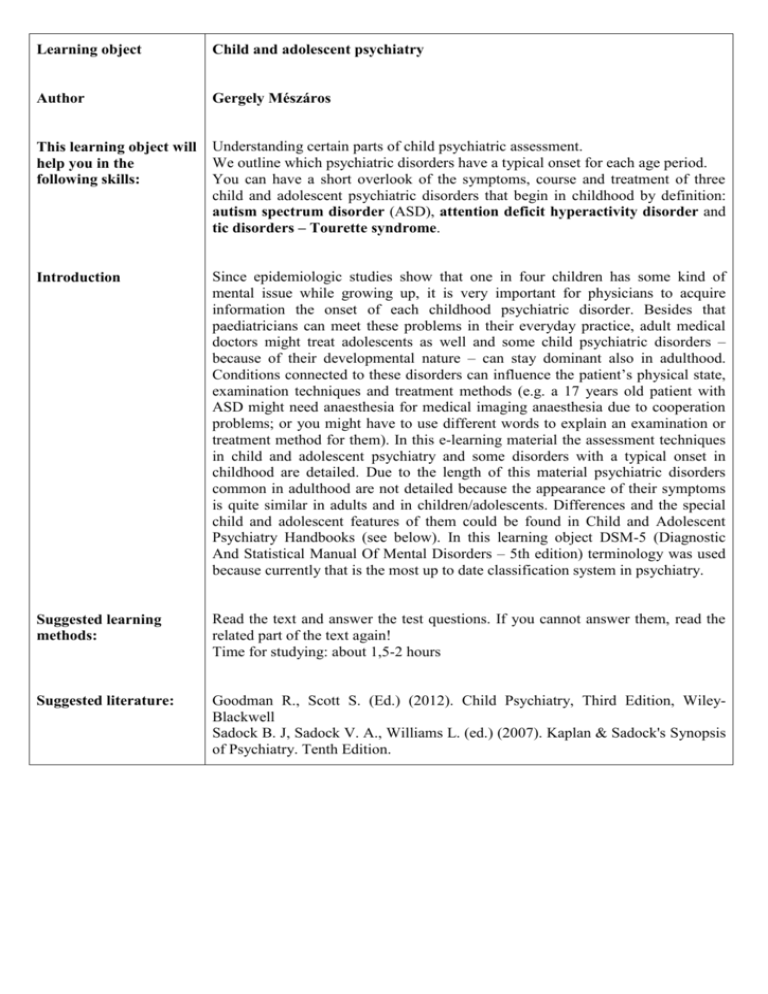
Learning object Child and adolescent psychiatry Author Gergely Mészáros This learning object will help you in the following skills: Understanding certain parts of child psychiatric assessment. We outline which psychiatric disorders have a typical onset for each age period. You can have a short overlook of the symptoms, course and treatment of three child and adolescent psychiatric disorders that begin in childhood by definition: autism spectrum disorder (ASD), attention deficit hyperactivity disorder and tic disorders – Tourette syndrome. Introduction Since epidemiologic studies show that one in four children has some kind of mental issue while growing up, it is very important for physicians to acquire information the onset of each childhood psychiatric disorder. Besides that paediatricians can meet these problems in their everyday practice, adult medical doctors might treat adolescents as well and some child psychiatric disorders – because of their developmental nature – can stay dominant also in adulthood. Conditions connected to these disorders can influence the patient’s physical state, examination techniques and treatment methods (e.g. a 17 years old patient with ASD might need anaesthesia for medical imaging anaesthesia due to cooperation problems; or you might have to use different words to explain an examination or treatment method for them). In this e-learning material the assessment techniques in child and adolescent psychiatry and some disorders with a typical onset in childhood are detailed. Due to the length of this material psychiatric disorders common in adulthood are not detailed because the appearance of their symptoms is quite similar in adults and in children/adolescents. Differences and the special child and adolescent features of them could be found in Child and Adolescent Psychiatry Handbooks (see below). In this learning object DSM-5 (Diagnostic And Statistical Manual Of Mental Disorders – 5th edition) terminology was used because currently that is the most up to date classification system in psychiatry. Suggested learning methods: Read the text and answer the test questions. If you cannot answer them, read the related part of the text again! Time for studying: about 1,5-2 hours Suggested literature: Goodman R., Scott S. (Ed.) (2012). Child Psychiatry, Third Edition, WileyBlackwell Sadock B. J, Sadock V. A., Williams L. (ed.) (2007). Kaplan & Sadock's Synopsis of Psychiatry. Tenth Edition.
